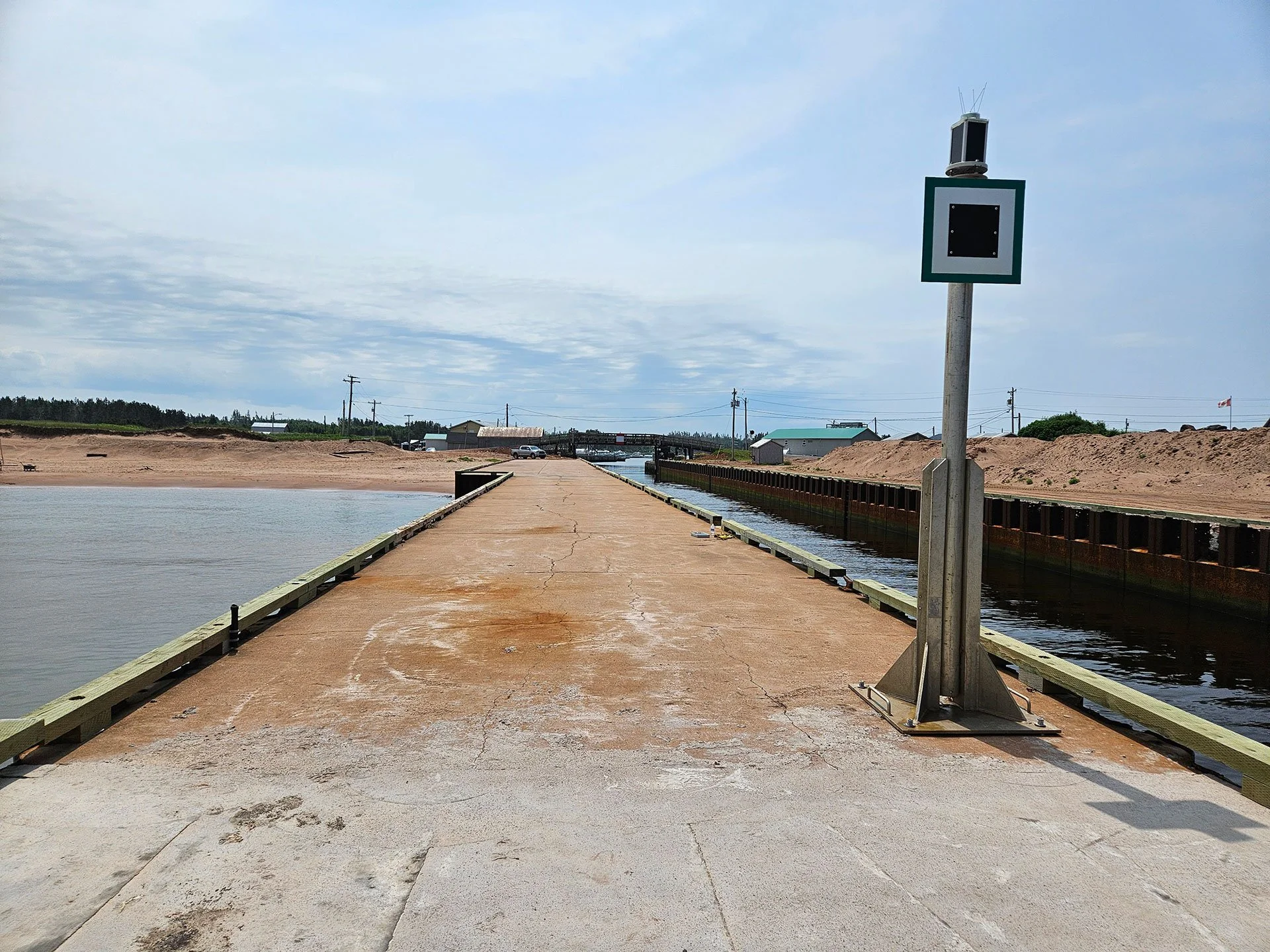Naufrage Breakwater Reconstruction
Location: Naugrage Harbour, King’s County, PEI
Client: Public Services and Procurement, Department of Fisheries and Oceans, Small Craft Harbours
Timeframe: 2017-2018
Key Staff: Ron Keefe, Greg MacDonald
Project Description
Naufrage harbour is in Kings County, PE. This project included the demolition and re-construction of the existing breakwater structure that protects the run from the harbour out to the Gulf of St. Lawrence. The project was completed for DFO Small Craft Harbours through Public Services and Procurement Canada (PSPC). PSPC hired Harbourside Engineering Consultants on behalf of SCH to complete the structural design work. The existing breakwater was a timber piled structure, a concrete deck and armour stone below and at the end. The new structure is a steel sheet pile wall with a concrete deck and armour stone behind and at the end of the new breakwater.
Harbourside’s Role
For this project, Harbourside was engaged as the prime consultant to complete the design of a new breakwater to replace the existing breakwater structure. Our scope of services for this project included pre-design services including a site investigation and assessment of the existing conditions. In addition, we coordinated an as-built topographic and bathymetry survey of the existing structures and harbour bottom to aide in the development of accurate drawings of the existing and new structure. Next, we completed concept designs by developing options analysis of the potential breakwater configurations and structural options including: a rubble mound breakwater, an SSP wall structure with armour stone and a rubble mound breakwater and a new timber piled structure and armour stone.
In the next phase of the project, we completed the detailed design of the recommended option (a SSP wall structure with armour stone and a rubble mound breakwater) which included the development and review of the construction documents (drawings, specifications, schedule, and capital cost estimates) at 50%, 99% and 100% completion of the tender package. Part of the detailed design phase included reviewing the constructability of the proposed structure with our geotechnical sub-consultant. We reviewed construction phasing options to demolish the existing structure which included timber piles and some steel sheet pile sections at the start and end of the breakwater. The proposed installation methodology, the potential risks of the project, the project schedule and the capital cost estimates were all reviewed and discussed with the Project Manager, Intermediate Engineering, Geotechnical sub-consultant, and the client prior to finalizing the tender documents.
Throughout the tender and construction, Harbourside provided support for the PSPC project manager by completing periodic site inspections, answering technical queries, developing addendums, and developing innovative solutions to help the contractor deal with unique site conditions.
As part of this project, Harbourside was involved in supporting DFO SCH with their environmental submissions to obtain the environmental permits. Harbourside also supported DFO SCH with their submissions to Transport Canada to obtain approval to complete the construction of this structure.
Unique Challenges
This project had several challenges from a design and construction perspective. The main constraints was that the harbour authority and end users required the new structure with a vertical face on the run side of the breakwater. This was required because of safety concerns of the harbour users upon entry on return into the harbour. This eliminated some potential options. Another challenge was tying the new sheet pile into the existing structure. Where the two structures tied in, there were existing steel sheet piles and due to heavy corrosion at the mudline, these sheets could not be removed. Due to this, a small step in the new sheet pile wall was required to avoid an interference with the new and existing sheet piles. Some project risks cannot be mitigated; however, quickly, and decisively dealing with issues as they arise onsite during construction is important to maintaining the overall project schedule and budget.
Social Impact
Naufrage is so named after the French word for “shipwreck”. The conditions near the Harbour entry cause shifting sand to form dangerous sandbars, and the harbour requires substantial dredging. Added to these conditions, the previously outdated infrastructure, and the harbour was becoming hazardous. While the in-water conditions remain challenging, the usability of the harbour has improved dramatically as a result of Harbourside’s work.






